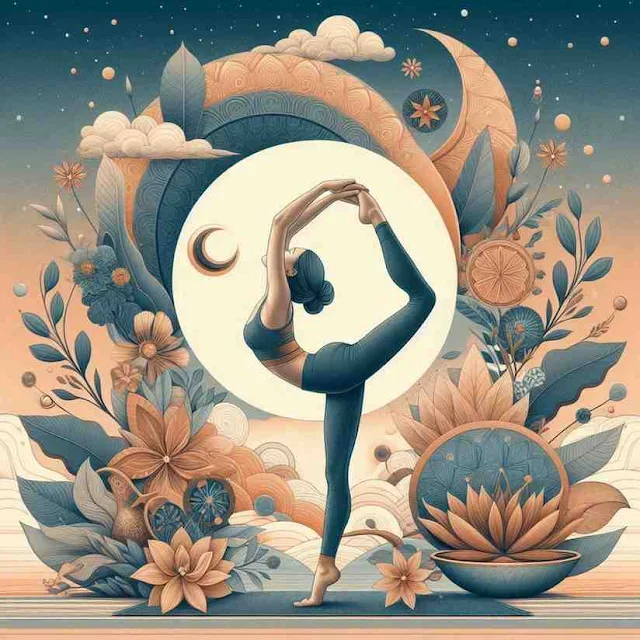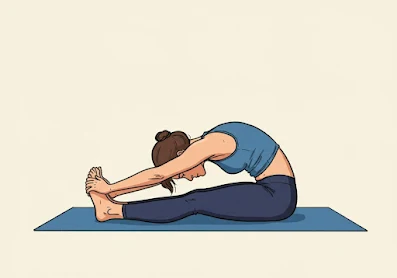
Have you ever wished you could move more freely or stand steadily without wobbling? If so, yoga might just be the gentle exercise you need. Yoga is not only about calming your mind—it's also a powerful way to improve flexibility and enhance balance. In this post, I'll walk you through some of the best yoga poses that can help you stretch those muscles and steady your body. Whether you’re a beginner or have some yoga experience, these poses are friendly and effective.
Why Focus on Flexibility and Balance?
First off, you might be wondering: why are flexibility and balance so important?
Flexibility means how much your muscles and joints can move. When you're flexible, everyday tasks—like reaching for the top shelf or bending down to tie your shoes—feel easier and less stiff.
Balance, on the other hand, helps keep you upright and steady. Good balance reduces the risk of falls and improves your posture, which can prevent back and joint pain. Plus, it just makes you feel more confident moving around.
I've personally struggled with stiff hamstrings and shaky balance, especially after sitting long hours at a desk. Adding yoga routines focusing on these areas really changed the game for me. Over time, I found myself stretching further and feeling steadier on my feet.
How Yoga Helps Flexibility and Balance
Yoga gently lengthens tight muscles and strengthens the smaller muscles around your joints that often get neglected. Many poses involve holding steady on one leg or reaching your arm far, which challenges your balance.
Think of your body like a tree: flexible branches sway with the wind without breaking, and a strong trunk keeps the tree rooted firmly no matter what. Yoga helps create that flexibility in your limbs and that strength and steadiness in your core.
So, let’s jump into some easy-to-follow yoga poses that you can try at home or in a class to start feeling more flexible and balanced.
1. Downward Facing Dog (Adho Mukha Svanasana)
If you’ve ever done yoga, you’ve probably tried this pose. It’s a fantastic way to stretch your hamstrings, calves, and shoulders, all while engaging your core to improve balance.

How to do it:
- Start on your hands and knees, with wrists below shoulders and knees below hips.
- Spread your fingers wide, press through your palms, and lift your hips towards the ceiling.
- Straighten your legs as much as comfortable and try to press your heels toward the floor.
- Keep your head relaxed between your arms and hold for 30 seconds to 1 minute.
Pro tip: If your hamstrings feel tight, it’s okay to keep knees slightly bent. Over time, your flexibility will improve!
2. Tree Pose (Vrikshasana)
Looking to challenge your balance? Tree Pose is a classic that grounds you through one leg and stretches the other.

Step-by-step:
- Stand tall with your feet hip-width apart.
- Shift your weight onto your right leg.
- Lift your left foot and place it on your inner right thigh or calf (avoid the knee).
- Bring your hands together in front of your chest in a prayer position or raise them overhead.
- Hold for 30 seconds and then switch sides.
This pose brought me back to my roots—literally! Like a tree, feeling steady while reaching upwards made me realize how interconnected balance and flexibility are.
3. Warrior II (Virabhadrasana II)
Warrior II is excellent for building strength in your legs and improving hip flexibility, while your extended arms enhance balance.
.jpeg)
How to do it:
- Stand with your feet about 3-4 feet apart.
- Turn your right foot out 90 degrees and your left foot slightly inwards.
- Bend your right knee until it’s directly above your ankle.
- Extend your arms out to the sides, parallel to the floor, palms down.
- Look over your right hand and hold for 30 seconds.
- Switch sides.
Warrior II makes me feel strong and focused every time I practice. It’s like preparing for a challenge, steady and ready.
4. Cat-Cow Pose (Marjaryasana-Bitilasana)
Want a gentle way to wake up your spine and improve flexibility? The Cat-Cow flow stretches the entire back, increases spinal mobility, and also warms up your core for balance.
.webp)
Instructions:
- Start on all fours with wrists under shoulders and knees under hips.
- Inhale: Arch your back, lifting your tailbone and chest, dropping your belly (Cow Pose).
- Exhale: Round your spine, tucking your tailbone, and drawing your chin toward your chest (Cat Pose).
- Repeat 10 rounds at a slow, steady pace.
This pose always helps me shake off stiffness after a long day. It’s like a gentle wake-up call for your spine.
5. Seated Forward Bend (Paschimottanasana)
This classic forward fold is all about deep stretching your hamstrings and lower back, areas that tend to get tight if you sit a lot.
.jpeg)
Steps:
- Sit on the floor with your legs stretched straight in front.
- Inhale and lengthen your spine upwards.
- Exhale and hinge at your hips to fold forward, reaching toward your toes.
- Don’t worry if you can’t reach your toes; rest your hands wherever they land—shins, ankles, or feet.
- Hold for 30 seconds to 1 minute.
Imagine your spine as a spring—this pose compresses and then gently decompresses your back, improving flexibility little by little.
6. Eagle Pose (Garudasana)
If you want to seriously test your balance and stretch your shoulders, Eagle Pose is a fun challenge.
How to practice:
- Stand tall and bend your knees slightly.
- Cross your right thigh over your left, hooking your right foot behind your left calf if possible.
- Cross your arms at the elbows, right over left, and bring palms to touch.
- Lift your elbows while keeping shoulders down.
- Hold for 15-30 seconds, then switch sides.
At first, I couldn’t stop wobbling in this pose. But with patience, it not only improved my balance but also helped release tension in my shoulders after long hours typing on the computer.
7. Triangle Pose (Trikonasana)
This pose stretches your sides, hips, and hamstrings, and challenges your balance when you reach for the toes and extend your other arm upwards.
.jpg)
Here's how:
- Stand with feet wide apart.
- Turn your right foot out 90 degrees and left foot slightly in.
- Extend arms to the sides.
- Reach your right hand down to your ankle, shin, or the floor beside your foot.
- Stretch your left arm straight up at the ceiling.
- Turn your gaze to your left hand and hold for 30 seconds, then switch sides.
This pose always makes me feel tall and stretched like a triangle reaching to the sun—strong, flexible, and balanced.
Tips for Starting Your Flexibility and Balance Yoga Practice
Before you try these poses, here are some friendly pointers that helped me when I began my yoga journey:
- Be patient: Flexibility and balance improve gradually. Don’t rush or push your body too hard.
- Use props: Blocks, straps, or even a wall can support you in balancing and stretching safely.
- Focus on your breath: Breathing deeply helps your muscles relax and improves your focus for balance.
- Practice regularly: Even 10-15 minutes a day can make a big difference.
Also, listen to your body. If something feels painful, ease out or modify the pose. The goal is steady progress, not discomfort.
Final Thoughts
Yoga is a wonderful tool to increase flexibility and enhance balance—two qualities that make everyday movement easier and more enjoyable. The poses I shared are easy to practice at home and can fit nicely into your daily routine.
Have you tried any of these poses before? Or are there other yoga poses you find helpful for flexibility and balance? Share your thoughts and experiences in the comments below—I’d love to hear from you!
Remember, every time you step onto your mat, you’re investing in a more agile and balanced you. Give yourself the gift of patience, and watch how your body and mind transform.
Namaste!
```
.png)
.webp)

Drop your thoughts below – your opinion might inspire our next post!